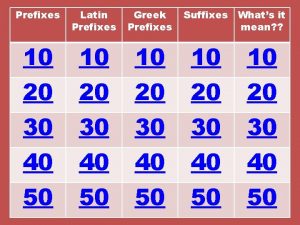In the name of Allah Most Gracious Most






























































- Slides: 62

In the name of Allah, Most Gracious, Most Compassionate

>> Viscosity Group Members Aqsan Naveed Ahmad Sattar Umer Zahid Mohsin Mahmood

Aqsam Naveed

>>> Definition Viscosity is an internal property of a fluid that offers resistance to flow. The resistance of a substance to flow. For example, water has a lower viscosity than molasses and flows more easily. Viscosity is related to the concept of shear force It can be understood as the effect of different layers of the fluid exerting shearing force on each other, or on other surfaces, as they move against each other.

Types of “Viscosity ” Dynamic (absolute) Viscosity It is the tangential force per unit area required to move one horizontal plane with respect to the other at unit velocity when maintained a unit distance apart by the fluid. The shearing stress between the layers of non turbulent fluid moving in straight parallel lines can be defined for a Newtonian fluid

• The dynamic or absolute viscosity can be expressed like • τ = μ dc/dy (1) • where • τ = shearing stress • μ = dynamic viscosity • Equation (1) is known as the Newtons Law of Friction.

• In the SI system the dynamic viscosity units are N s/m 2, Pa s or kg/m s where • 1 Pa s = 1 N s/m 2 = 1 kg/m s • The dynamic viscosity is also often expressed in the metric CGS (centimeter-gram-second) system as g/cm. s, dyne. s/cm 2 or poise (p) where • 1 poise = dyne s/cm 2 = g/cm s = 1/10 Pa s • For practical use the Poise is to large and it's usual divided by 100 into the smaller unit called the centi. Poise (c. P) where • 1 p = 100 c. P • Water at 68. 4 o. F (20. 2 o. C) has an absolute viscosity of one - 1 - centi. Poise.

Kinematic Viscosity • is the ratio of absolute or dynamic viscosity to density - a quantity in which no force is involved. Kinematic viscosity can be obtained by dividing the absolute viscosity of a fluid with it's mass density • ν = μ / ρ (2) • where • ν = kinematic viscosity • μ = absolute or dynamic viscosity • ρ = density • In the SI-system theoretical unit is m 2/s or commonly used Stoke (St) where • 1 St = 10 -4 m 2/s

• Since the Stoke is an unpractical large unit, it is usual divided by 100 to give the unit called Centistokes (c. St) where • 1 St = 100 c. St • 1 c. St = 10 -6 m 2/s • Since the specific gravity of water at 68. 4 o. F (20. 2 o. C) is almost one (1), the kinematic viscosity of water at 68. 4 o. F is for all practical purposes 1. 0 c. St.

Viscosity and Reference Temperatures • The viscosity of a fluid is highly temperature dependent and for either dynamic or kinematic viscosity to be meaningful, the reference temperature must be quoted. In ISO 8217 the reference temperature for a residual fluid is 100 o. C. For a distillate fluid the reference temperature is 40 o. C. • For a liquid - the kinematic viscosity will decrease with higher temperature • For a gas - the kinematic viscosity will increase with higher temperature

Comparison of temperaturedependent • viscosities – Gas: oxygen • Increase with temperature • Liquid: aniline – Decrease with temperature

Other Commonly used Viscosity Units • Saybolt Universal Seconds (or SUS, SSU) • Saybolt Universal Seconds (or SUS) is used to measure viscosity. The efflux time is Saybolt Universal Seconds (SUS) required for 60 milliliters of a petroleum product to flow through the calibrated orifice of a Saybolt Universal viscometer, under carefully controlled temperature and as prescribed by test method ASTM D 88. This method has largely been replaced by the kinematic viscosity method. Saybolt Universal Seconds is also called the SSU number (Seconds Saybolt Universal) or SSF number (Saybolt Seconds Furol).

• Kinematic viscosity versus dynamic or absolute viscosity can be expressed as • ν = 4. 63 μ / SG (3) • where • ν = kinematic vicosity (SSU) • μ = dynamic or absolute viscosity (c. P)

Degree Engler • Degree Engler is used in Great Britain as a scale to measure kinematic viscosity. Unlike the Saybolt and Redwood scales, the Engler scale is based on comparing a flow of the substance being tested to the flow of another substance - water. Viscosity in Engler degrees is the ratio of the time of a flow of 200 cubic centimetres of the fluid whose viscosity is being measured - to the time of flow of 200 cubic centimeters of water at the same temperature (usually 20 o. C but sometimes 50 o. C or 100 o. C) in a standardized Engler viscosity meter.

Example - Converting between Kinematic and Absolute Viscosity for Air • Kinematic viscosity of air at 1 bar (105 Pa, N/m 2) and 40 o. C is 16. 97 c. St (16. 97 10 -6 m 2/s). • The density of air estimated with the Ideal Gas Law • ρ = p / R T • where • ρ = density (kg/m 3) • p = absolute pressure (Pa, N/m 2) • R = individual gas constant (J/kg K) • T = absolute temperature (K) • ρ = (105 N/m 2) / ((287 J/kg/K) (273 o. C + 33 0 C) • = 1. 113 kg/m 3 • Absolute viscosity can be expressed as • μ = (1. 113 kg/m 3) (16. 97 10 -6 m 2/s) • = 1. 88 10 -5 (kg/m s, Ns/m 2, P)

Ahmad

Different types of Viscosity Shear-thickening liquids -low viscosity when stirred slowly, but viscosity increases when mixed quickly Shear thinning liquids -high viscosity when mixed slowly, easier to mix quickly Bingham liquids -at low stress behaves like a solid, high stress behaves like a liquid Granular materials -like Bingham, but do not have a well-defined viscosity

Types of Fluid on Viscosity Basis • Newtonian Fluids • Non-Newtonian Fluids

Continue

Newtonian Fluids • Fluids for which the shearing stress is linearly related to the rate of shearing strain are designated as Newtonian Fluids. • Newtonian materials are referred to as true liquids since their viscosity or consistency is not affected by shear such as agitation or pumping at a constant temperature. Fortunately most common fluids, both liquids and gases, are Newtonian. Water and oils are examples of Newtonian liquids.

Shear-thinning or Pseudoplastic Liquids • Shear-thinning or pseudoplastic liquids are those whose apparent viscosity decreases with increasing shear rate. Their structure is time-independent.

Pseudoplastic Liquids Grease

Thixotropic Fluids • Thixotropic liquids have a timedependent structure. The apparent viscosity of a thixotropic liquid decreases with increasing time, at a constant shear rate. • Ketchup and mayonnaise are examples of thixotropic materials. They appear thick or viscous but are possible to pump quite easily.

Dilatant Fluids • Shear Thickening Fluids or Dilatant Fluids increase their viscosity with agitation. Some of these liquids can become almost solid within a pump or pipe line. With agitation, cream becomes butter and Candy compounds, clay slurries and similar heavily filled liquids do the same thing.

Dilatant Fluids Starch in Water

Bingham Plastic Fluids • Bingham Plastic Fluids have a yield value which must be exceeded before it will start to flow like a fluid. From that point the viscosity will decrease with increase of agitation. Toothpaste, mayonnaise and tomato catsup are examples of such products.

Bingham Plastic Fluids Coal Tar

Viscosity and Specific Gravity of some Common Liquids

Viscosity and Temperature • Kinematic viscosity of liquids like water, mercury, oils SAE 10 and oil no. 3 - and gases like air, hydrogen and helium are indicated below. Note that • for liquids viscosity decreases with temperature • for gases viscosity increases with temperature


Umer Zahid

Measurement of viscosity • Measure flow in thepresence of agradient of speed • Poiseuille’s formulafor flow through acylindrical tubesubject to apressure drop P

Types of Viscometers • • • Redwood Viscometer Engler Viscometer Saybolt Viscometer Ostwald viscometer Falling-ball viscometer

Redwood • A standard British-type viscometer in which the viscosity is determined by the time, in seconds. • Required for a certain quantity of liquid to pass out through the orifice under given conditions • It is used for determining viscosities of petroleum oils.

Working • The inner cylinder is filled to the marker level and the outer cylinder filled so as to have sufficient height to give good heat transfer. • The first reading is taken by removing the stopper from the orifice. The recorded values were the water and test liquid temperatures and the time to collect say 50 cc of the liquid being recorded.

Conti……………. . • The collected 50 cc of liquid must be put back into the inner cylinder and the used cylinder inverted to empty completely. • The level of the sample is checked as, if more of the liquid is needed it would be added. The temperature is then raised and the agitator is used again continuously. This is done until the liquid is brought within 1 degree of the water temperature. The same parameters were again measured. This procedure is repeated for 5 samples in total (at least).

Engler Viscometer • An instrument used in the measurement of the degree Engler, a measure of viscosity; the kinematic viscosity ν in stokes for this instrument is obtained from the equation ν = 0. 00147 t - 3. 74/t, where t is the efflux time in seconds.

Working

Saybolt viscometer • It is Used to determine the viscosity of petroleum products at specified temperatures between 70 to 210 °F. • Stainless steel made, the Saybolt viscometer is supplied complete with two interchangeable orifices Furol and Universal, oil bath, electric heater with digital thermoregulator, stirrer, cooling coil, viscosity flask. • Thermometers are not included and must be ordered separately

Working

Ostwald viscometer • Need a small-diameter tube (capillary) • Measure time of flow of a specific volume through the capillary • Constant pressure drop across the capillary • Use Poiseuille’s equation to calculate viscosity • Must be calibrated with a known material

Equation for measurement

Falling-ball viscometer • Measure the terminal velocity of a ball falling in a fluid • Use Stokes Law for the viscous drag to determine viscosity

Equations…

Latest digital viscometers

Continue

Features • Continuous monitoring of viscosity, and temperature • Two 4 -20 m. A outputs for remote recording • Two analog outputs and RS 485 communication • Compact, explosion-proof systemt • Automatic self-cleaning • Readout in centipoises, c. St, or SSU • Optional LCD display

Installation

Continue

Mohsin Mahmood

Viscosity Application

Oil and Gas Drilling for oil and gas requires sensitive viscosity instrumentation, especially at lowshear rates, to insure that production is optimized.

Continue • Field viscosity measurements on drilling and fracturing fluids are required to predict flow performance under the extremely low.

Industrial Application • Viscosity measurement is really important for industry. • For correct pump selection careful viscosity measurements are taken

Continue • For the transport and storing facilities for fluids i. e pipes, tanks

Why Measuring Viscosity is Important For Many Industries • Nearly all fluids (with the notable exception of the liquid form of the helium isotopes helium-3 and helium-4) have some degree of resistance to flow, with the measurement being used to determine the degree of viscosity on a spectrum ranging from no stress resistance (called an ideal liquid) to total resistance.

Continue • Since the temperature of a liquid and its viscosity are correlated, a viscosimeter or viscometer must be used in carefully temperature controlled conditions to produce accurate results.

Continue • Even a small change in temperature can have enough of an effect to negatively impact the outcome of a quality control test or production process.

Continue • Therefore to maintain quality of product, viscosity is measured step to step at industries

Industrial Viscometer

Continue

Continue
 In the name of allah, the most gracious, the most merciful
In the name of allah, the most gracious, the most merciful Almighty allah the most merciful
Almighty allah the most merciful In the name of allah the beneficent the merciful
In the name of allah the beneficent the merciful Aqeedah in islam
Aqeedah in islam In the name of allah the most gracious
In the name of allah the most gracious In the name of god, most gracious, most merciful prayer
In the name of god, most gracious, most merciful prayer The most gracious
The most gracious In the name of god most gracious prayer
In the name of god most gracious prayer All praise due to allah the most gracious
All praise due to allah the most gracious Manusia berencana allah yang menentukan
Manusia berencana allah yang menentukan In the name of allah the most beneficent the most merciful
In the name of allah the most beneficent the most merciful سsh
سsh In the name of allah the most beneficent the most merciful
In the name of allah the most beneficent the most merciful Allah the most beneficent
Allah the most beneficent Allah the beneficent
Allah the beneficent Gracious professionalism definition
Gracious professionalism definition Negative prefix of frost
Negative prefix of frost The lord is merciful and gracious
The lord is merciful and gracious Oh good gracious
Oh good gracious Gracious and merciful god
Gracious and merciful god Gracious professionalism definition
Gracious professionalism definition Name a line containing point a
Name a line containing point a Dalil asmaul husna al matin
Dalil asmaul husna al matin Jelaskan janji allah tentang juruselamat
Jelaskan janji allah tentang juruselamat Al qahhar meaning
Al qahhar meaning Hakkel yakin
Hakkel yakin In the name of allah the beneficent the merciful
In the name of allah the beneficent the merciful In the name of allah the compassionate the merciful
In the name of allah the compassionate the merciful Na oodhu billah
Na oodhu billah In the name of of allah the merciful
In the name of of allah the merciful In the name of allah the beneficent the merciful prayer
In the name of allah the beneficent the merciful prayer Allah the almighty
Allah the almighty Presentation start with the name of allah
Presentation start with the name of allah In the name of of allah the merciful
In the name of of allah the merciful Hát kết hợp bộ gõ cơ thể
Hát kết hợp bộ gõ cơ thể Lp html
Lp html Bổ thể
Bổ thể Tỉ lệ cơ thể trẻ em
Tỉ lệ cơ thể trẻ em Gấu đi như thế nào
Gấu đi như thế nào Glasgow thang điểm
Glasgow thang điểm Bài hát chúa yêu trần thế alleluia
Bài hát chúa yêu trần thế alleluia Các môn thể thao bắt đầu bằng tiếng đua
Các môn thể thao bắt đầu bằng tiếng đua Thế nào là hệ số cao nhất
Thế nào là hệ số cao nhất Các châu lục và đại dương trên thế giới
Các châu lục và đại dương trên thế giới Công của trọng lực
Công của trọng lực Trời xanh đây là của chúng ta thể thơ
Trời xanh đây là của chúng ta thể thơ Mật thư tọa độ 5x5
Mật thư tọa độ 5x5 Phép trừ bù
Phép trừ bù Phản ứng thế ankan
Phản ứng thế ankan Các châu lục và đại dương trên thế giới
Các châu lục và đại dương trên thế giới Thơ thất ngôn tứ tuyệt đường luật
Thơ thất ngôn tứ tuyệt đường luật Quá trình desamine hóa có thể tạo ra
Quá trình desamine hóa có thể tạo ra Một số thể thơ truyền thống
Một số thể thơ truyền thống Bàn tay mà dây bẩn
Bàn tay mà dây bẩn Vẽ hình chiếu vuông góc của vật thể sau
Vẽ hình chiếu vuông góc của vật thể sau Nguyên nhân của sự mỏi cơ sinh 8
Nguyên nhân của sự mỏi cơ sinh 8 đặc điểm cơ thể của người tối cổ
đặc điểm cơ thể của người tối cổ Thế nào là giọng cùng tên
Thế nào là giọng cùng tên Vẽ hình chiếu đứng bằng cạnh của vật thể
Vẽ hình chiếu đứng bằng cạnh của vật thể Vẽ hình chiếu vuông góc của vật thể sau
Vẽ hình chiếu vuông góc của vật thể sau Thẻ vin
Thẻ vin đại từ thay thế
đại từ thay thế điện thế nghỉ
điện thế nghỉ

















































































